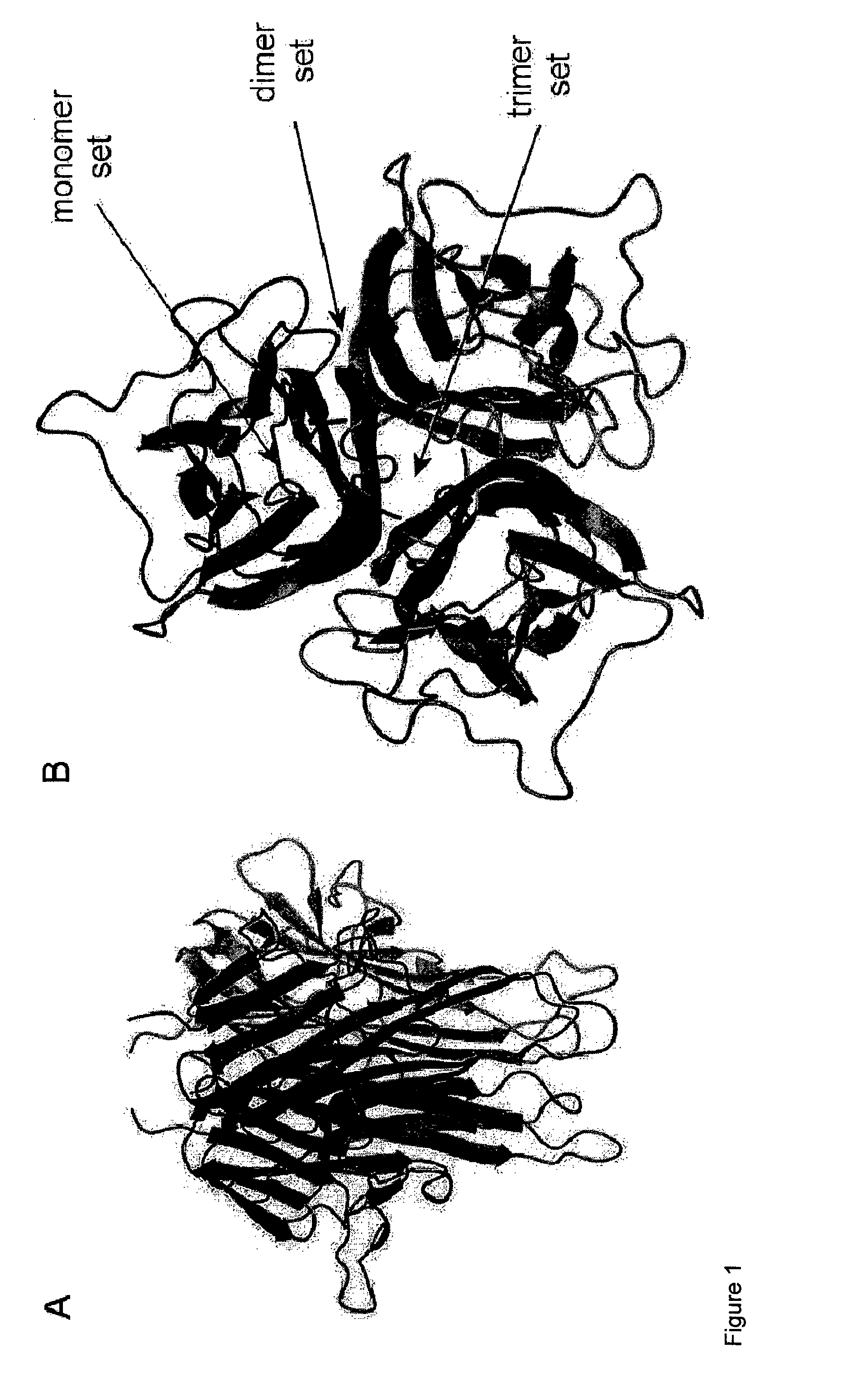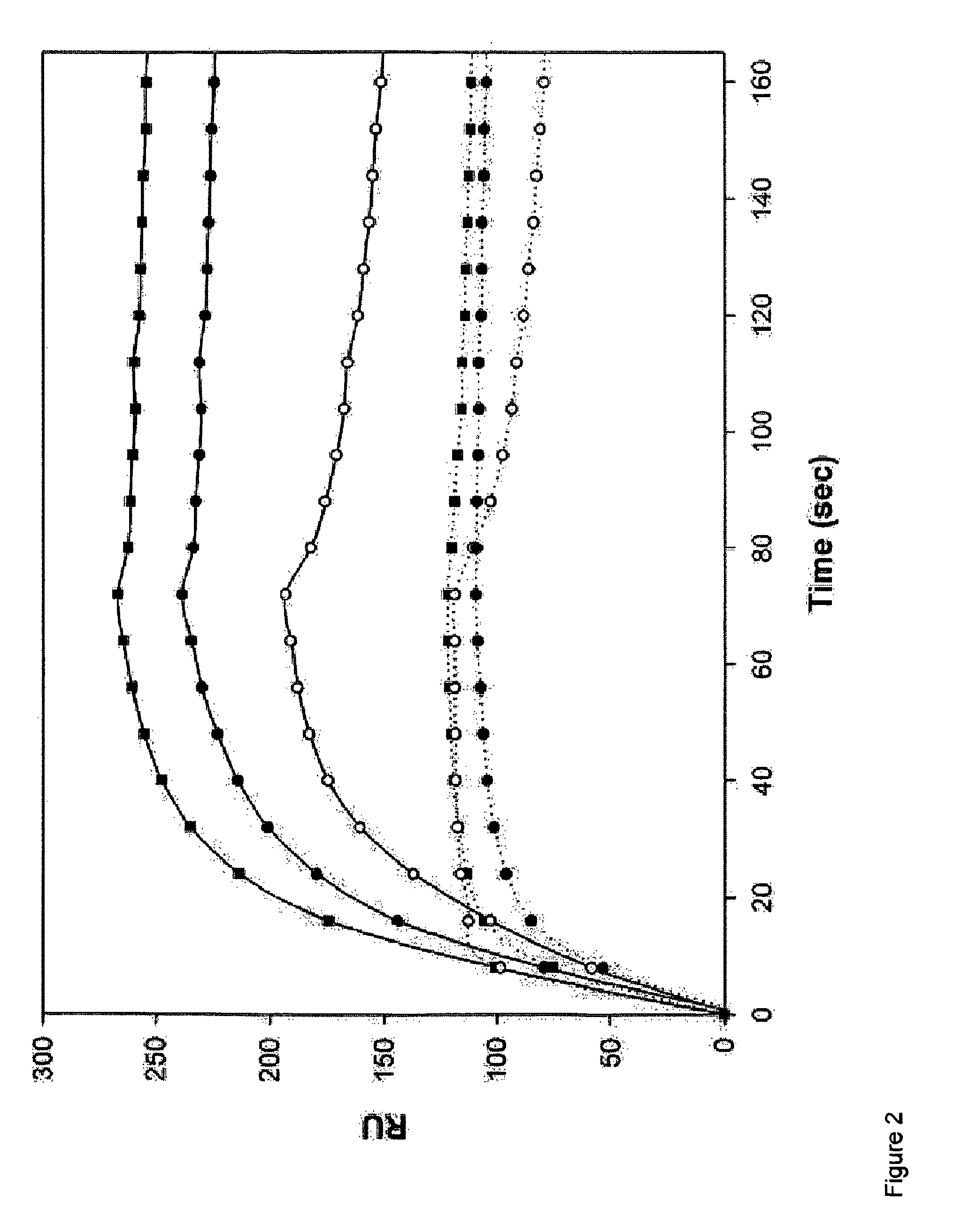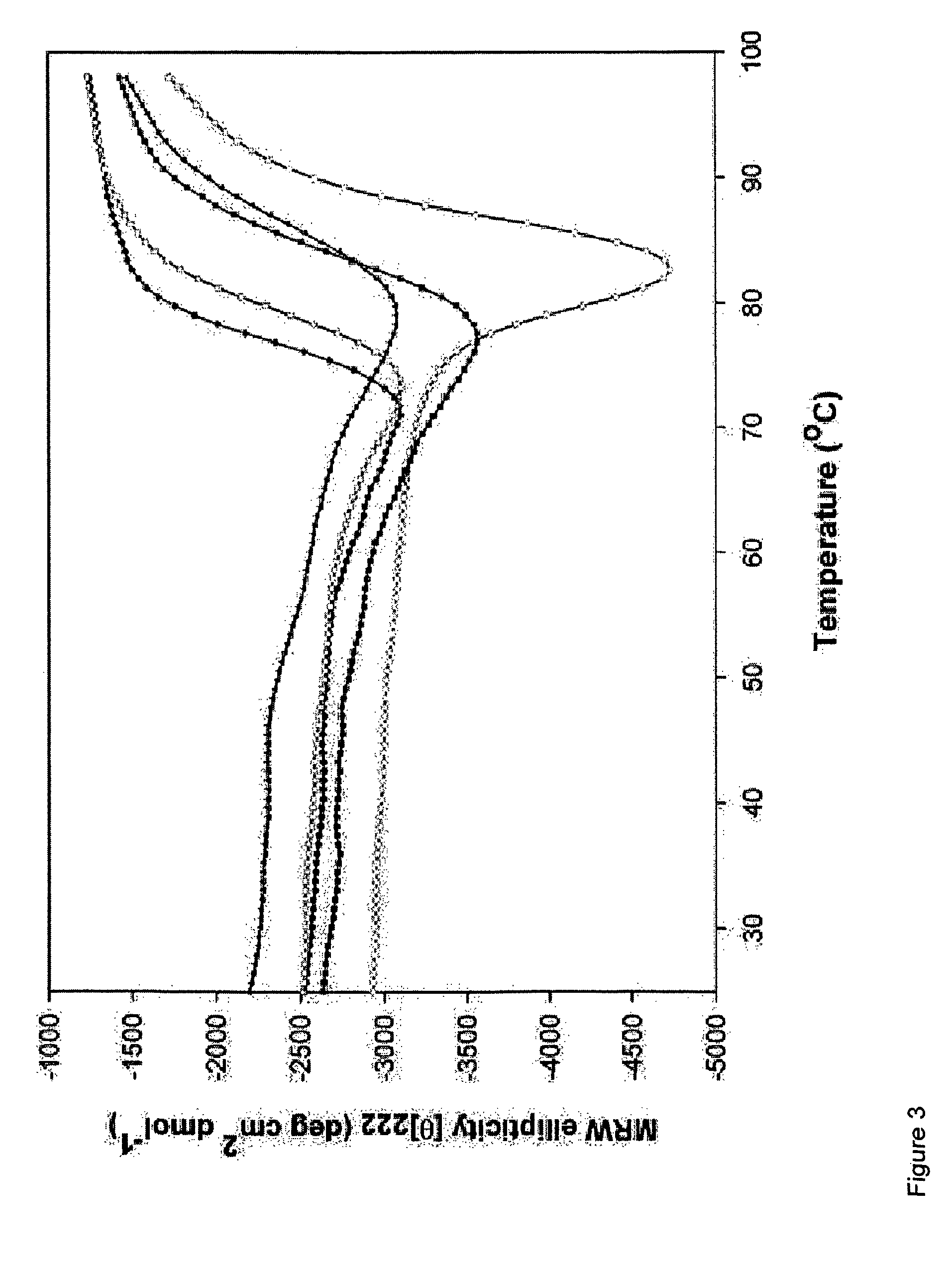Cytokine design
a cytokine and design technology, applied in the field of cytokine design, can solve the problems of deregulation of immune homeostasis, inability to design a limited number of potentially improved variants, and inability to meet the application requirements of many of these molecules in clinical settings, so as to improve the free energy of the monomer
- Summary
- Abstract
- Description
- Claims
- Application Information
AI Technical Summary
Benefits of technology
Problems solved by technology
Method used
Image
Examples
example 1
Stable TRAIL Proteins
Methods
[0159]All reagents were of analytical grade unless specified otherwise. Isopropyl-β-D-1-thiogalactoside (IPTG), ampicillin and dithiotreitol (DTT) were from Duchefa. Chromatographic columns and media were from Amersham Biosciences. Restriction enzymes used were purchased from New England Biolabs.
[0160]All other chemicals were from Sigma.
Computational Design of Mutants
[0161]A detailed description of the protein design algorithm, PERLA, is available elsewhere (Lacroix, E. Protein design: a computer based approach, Ph.D. thesis. (U. Libre de Bruxelles, 1999)) (http: / / ProteinDesign.EMBL-Heidelberg.DE) and its use has been previously described (see, for example, Ventura et al., Nat. Struct. Biol. 9, 485-493 (2002). In the case of oligomeric proteins like TRAIL, protein design with PERLA requires the following steps: Firstly, residues of a monomer that could establish specific interactions with the contiguous monomer must be identified and selected. Secondly, s...
example 2
TRAIL Variants Selective for the DR4 (TRAIL-R1) or DR5 (TRAIL-R2) Receptor
Methods
[0187]All reagents were of analytical grade unless specified otherwise. Isopropyl-β-D-1-thiogalactoside (IPTG), ampicillin and dithiotreitol (DTT) were from Duchefa. Complete® protease inhibitor cocktail was purchased from Roche. Chromatographic columns and media were from Amersham Biosciences. Restriction enzymes used were purchased from New England Biolabs. All other chemicals were from Sigma.
Computational Design of Mutants
[0188]Computational design using the protein design algorithm, PERLA and FOLD-X has been described above. Similarly, the resultant PDB files containing the mutations were energy minimized using GROMOS 43B1 as implemented in Swiss-PdbViewer v3.7b2, and evaluated by FOLD-X (http: / / fold-x.embl-heidelberg.de). The final energies of interaction from the designs of TRAIL mutants interacting with its different receptors are compared to the reference, wild-type TRAIL in complex with its fou...
example 3
Receptor Specific TRAIL Variants: Binding Analysis by SPR
[0210]Binding experiments were performed using a surface plasmon resonance-based biosensor Biacore 3000 (Biacore AB, Uppsala, Sweden), at 37° C. Recombinant receptors were ordered from R&D systems (R&D systems, Minneapolis, Minn., USA). Immobilization of the DR4, DR5 and RANK receptors on the sensor surface of a Biacore CM5 sensor chip was performed following a standard amine coupling procedure according to the manufacturer's instructions. Receptors were coated at a level of ˜600-800 RU. Purified wild-type TRAIL and TRAIL mutants were injected in three-fold at concentrations ranging from 250 nM to 0.1 nM at 70 μl / min flow rate and at 37° C. Between injections the receptor / sensor surface was regenerated using 30 μl of 3 M sodium acetate pH 5.2.
[0211]Mutants R130E, G160M, D218Y, I220M, D269H, D269K, D269R, D269HT214R, D269HE195R and R191ED267R were purified as described in Example 2. Binding of the purified mutants to immobilize...
PUM
| Property | Measurement | Unit |
|---|---|---|
| distance | aaaaa | aaaaa |
| distance | aaaaa | aaaaa |
| concentration | aaaaa | aaaaa |
Abstract
Description
Claims
Application Information
 Login to View More
Login to View More - R&D
- Intellectual Property
- Life Sciences
- Materials
- Tech Scout
- Unparalleled Data Quality
- Higher Quality Content
- 60% Fewer Hallucinations
Browse by: Latest US Patents, China's latest patents, Technical Efficacy Thesaurus, Application Domain, Technology Topic, Popular Technical Reports.
© 2025 PatSnap. All rights reserved.Legal|Privacy policy|Modern Slavery Act Transparency Statement|Sitemap|About US| Contact US: help@patsnap.com



